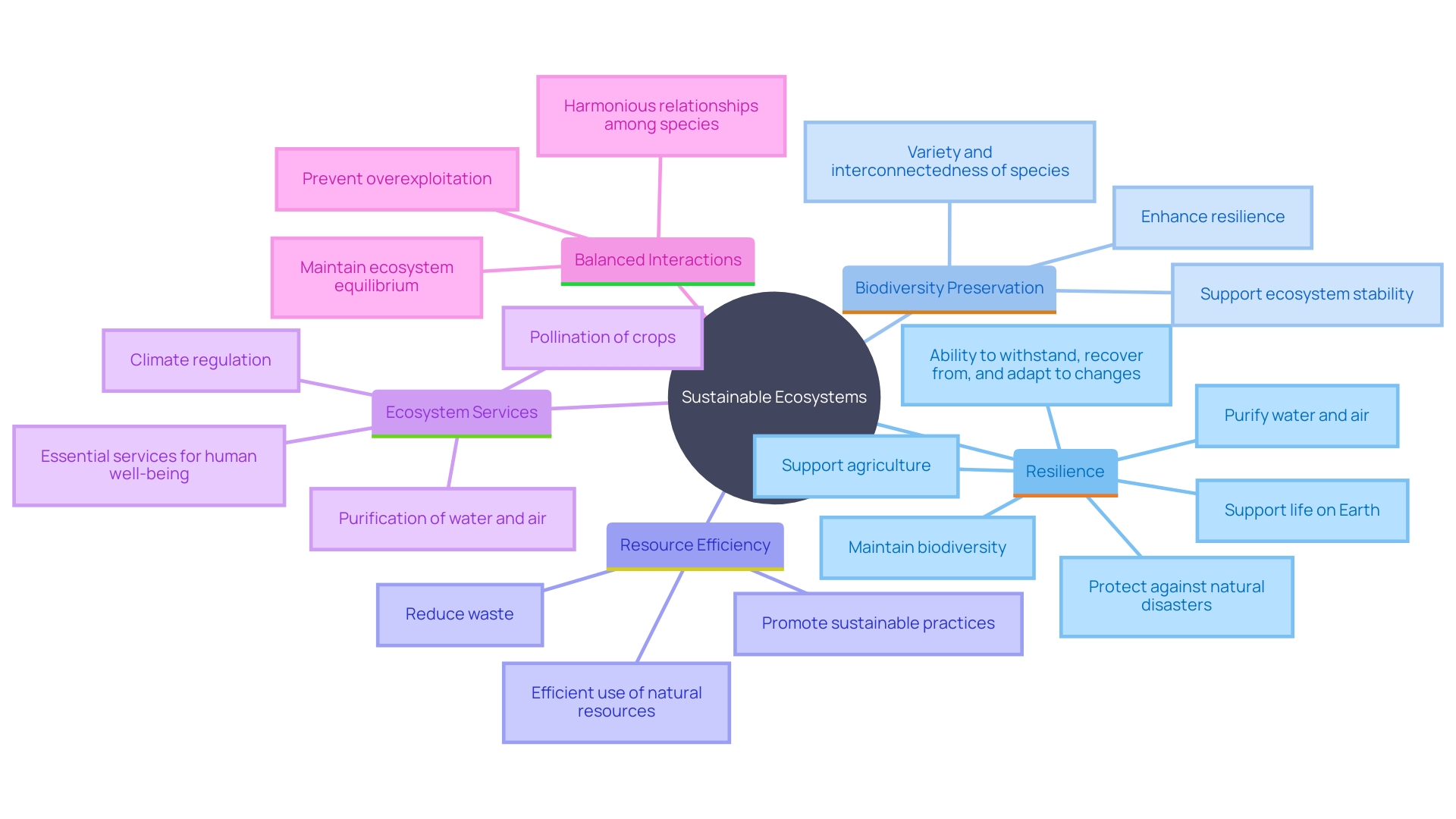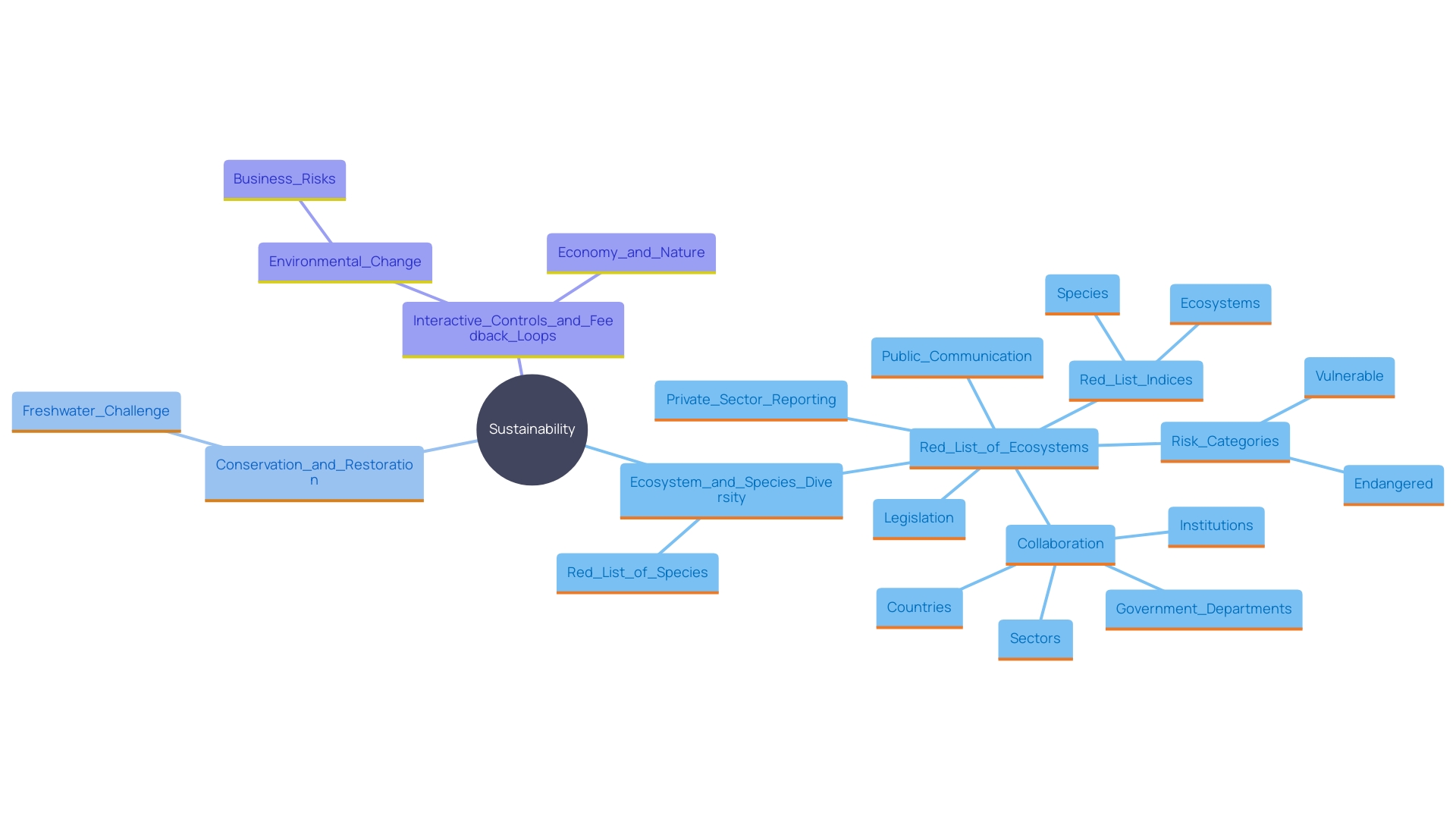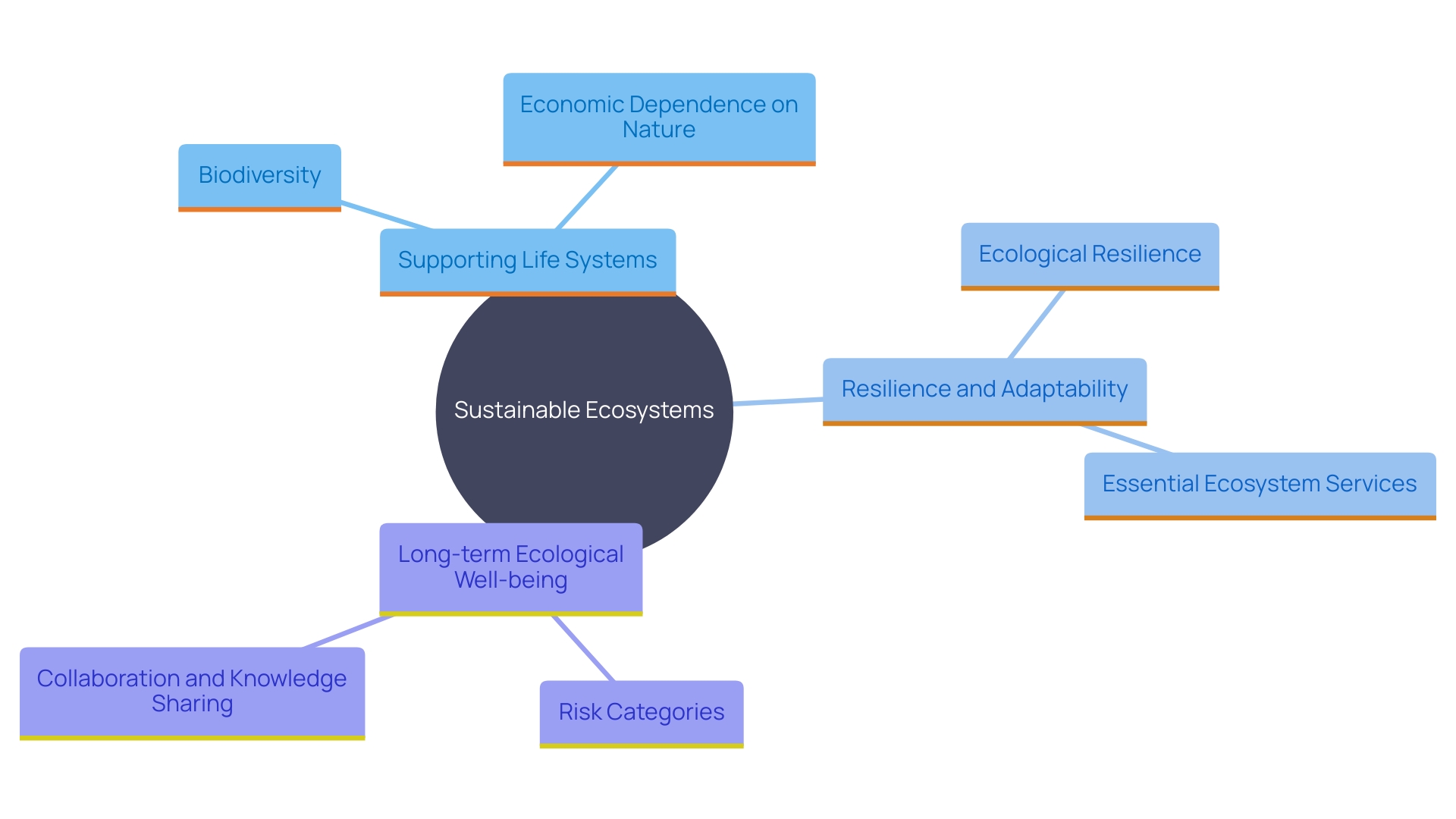Introduction
In an era marked by rapid environmental changes and escalating human impact, the sustainable management of ecosystems has become a critical focus. These biologically diverse communities are not only essential for maintaining ecological balance but also provide vital services that support human life and well-being. From climate regulation and water purification to nutrient cycling and pollination, the services rendered by sustainable ecosystems are indispensable.
This article delves into the definition and key characteristics of sustainable ecosystems, exploring the principles that underpin their resilience and the crucial role they play in supporting life on Earth. By examining real-world examples and highlighting the interconnected nature of ecosystem functions, the discussion underscores the importance of investing in the health and sustainability of our natural environments for future generations.
Definition of a Sustainable Ecosystem
A sustainable biological community is a biologically diverse system that preserves its structure and functions over time, offering essential services to both the environment and society. The idea of sustainability highlights the equilibrium between societal needs and environmental well-being, ensuring that natural resources are utilized responsibly and maintained for future generations. Sustainable environments are integral to climate regulation, water purification, and nutrient cycling, which are crucial for human well-being and quality of life.
For example, the incorporation of biological variety factors into adaptation strategies can improve the durability of natural systems, as shown by the restoration of mangroves in Grenada to bolster coastal strength against climate change. Similarly, biological corridors in urban areas, like those in Costa Rica, contribute to both biodiversity and the development of sustainable cities.
Local communities play a vital role in maintaining sustainable environments. Their involvement ensures that adaptation strategies are tailored to local socio-economic, cultural, and environmental contexts. This locally-led approach, supported by global initiatives like the Nature for Climate Adaptation Initiative, highlights the importance of empowering communities to make informed decisions about their environment.
The advantages of sustainable environments, often referred to as Nature’s Contributions to People (NCP), include pollination, pest control, and recreational opportunities. These contributions are especially important in human-altered environments where the interaction between human populations and the surrounding biological communities is intensive. Despite their importance, these local-scale contributions are often overlooked in global conservation priorities, which tend to focus on intact natural lands.
The urgency of assessing and communicating on biological diversity and environmental health is emphasized by recent advancements in technology, such as the NatureHelm platform. This tool allows companies and landowners to monitor and improve biodiversity outcomes, addressing the growing regulatory requirements for environmental accountability.
Recognizing the interdependence of sustainability efforts, the United Nations Sustainable Development Goals (SDGs) emphasize that progress in one area can amplify potential in others. Safeguarding environmental systems directly contributes to objectives associated with health, water, and economic advancement, demonstrating the interconnected essence of sustainable progress.
In general, investing in sturdy natural systems is essential not only for environmental health but also for the well-being and prosperity of societies. By preserving the equilibrium between human requirements and environmental health, sustainable systems guarantee that resources are accessible for future generations.
Key Characteristics of Sustainable Ecosystems
Sustainable ecosystems exhibit several key characteristics that contribute to their resilience and longevity:
-
Resilience: The ability to recover from disturbances and adapt to changes, ensuring the ecosystem remains functional. This resilience is crucial as it helps natural environments withstand and bounce back from natural events, such as earthquakes, or human-made causes, such as climate change, pollution, or deforestation. For instance, the Amazon rainforest, which has lost more than three-quarters of its resilience due to human activities, highlights the need for strong natural systems to maintain stability.
-
Biodiversity Preservation: A high level of species diversity enhances environmental stability and productivity. Biodiversity forms the web of life that we depend on for so many things—food, water, medicine, a stable climate, and economic growth. More than 1 billion people rely on forests for their livelihoods, and the land and ocean absorb more than half of all carbon emissions.
-
Resource Efficiency: Optimization of resource use minimizes waste and energy consumption while maximizing outputs. Effective resource utilization guarantees that natural systems can persist in offering vital services like clean air and water treatment.
-
Ecosystem Services: Provision of services such as clean air, water purification, pollination, and soil fertility, which are vital for human survival. Thriving natural environments support farming, preserve species variety, and safeguard against natural calamities. For example, resilient natural environments such as the Atlantic Forest in Brazil, which ranks second in biodiversity only to the Amazon, play a significant role in supporting local communities and reducing the effects of deforestation.
-
Balanced Interactions: Healthy relationships among organisms, including predator-prey dynamics, symbiosis, and competition, contribute to ecological balance. These interactions guarantee that biological communities stay varied and fruitful, bolstering the stability and safety of human societies.
Understanding and maintaining these characteristics is essential for the future of our planet and the well-being of its inhabitants.

Principles of Ecosystem Sustainability
The sustainability of ecosystems is rooted in several fundamental principles that guide effective management and conservation efforts:
-
Ecosystem and Species Diversity: Maintaining diverse ecosystems and species is crucial for resilience against environmental changes and stresses. This approach is essential to actions that minimize threats to biodiversity and guarantee sustainable utilization of natural systems. For instance, the Red List of Ecosystems provides risk categories—such as Endangered and Vulnerable—that are critical for setting priorities in conservation efforts and fostering collaboration across countries and sectors.
-
Conservation and Restoration: Implementing practices that conserve existing habitats and restore degraded areas enhances ecological integrity. This includes efforts like the Freshwater Challenge, aiming to revive 300,000km of rivers and 350 million hectares of wetlands by 2030. Such large-scale restoration projects are essential for addressing the degradation of freshwater sources, which are under increasing pressure from climate change and pollution.
-
Interactive Controls and Feedback Loops: Acknowledging the interconnectedness of system components, where alterations in one area can influence the whole system, underscores the significance of comprehensive management strategies. The adoption of a holistic approach, which involves comprehensive management and the participation of all user groups, exemplifies this principle. This approach has been particularly successful in the Great Lakes Basin, where it has facilitated integrated resource assessment and management across jurisdictional boundaries.

Importance of Sustainable Ecosystems
Sustainable ecosystems are critical for a multitude of reasons:
-
Supporting Life Systems: They provide the foundational resources and conditions necessary for all forms of life. Biodiversity forms the web of life that we depend on for so many things – food, water, medicine, a stable climate, and economic growth. Over half of global GDP is dependent on nature, and more than 1 billion people rely on forests for their livelihoods.
-
Resilience and Adaptability: Sustainable environments possess the inherent ability to adjust to changes, ensuring long-term stability and function. Robust natural systems safeguard the surroundings and assist in maintaining the stability and safety of communities. For example, the Amazon rainforest, which has lost over seventy-five percent of its resilience because of people's actions, illustrates the significance of ecological resilience when confronting climate change and deforestation.
-
Long-term Ecological Well-being: By encouraging a variety of species and environmental services, sustainable habitats enhance the overall well-being of the planet, supporting both organic and human systems. Ecosystems provide essential services such as purifying water and air, supporting agriculture, maintaining biodiversity, and protecting against natural disasters. Assessments of all terrestrial, marine, and freshwater ecosystems are available in numerous countries, reflecting the global effort to monitor and maintain ecological health.

Conclusion
Sustainable ecosystems are indispensable for the health of the planet and the well-being of humanity. They embody a delicate balance between biodiversity, resource efficiency, and the provision of essential ecosystem services that underpin life on Earth. The integration of local communities in conservation efforts not only enhances the resilience of these ecosystems but also ensures that the management strategies are contextually relevant and effective.
This collaborative approach is crucial in addressing the pressing challenges posed by climate change and habitat degradation.
The key characteristics of sustainable ecosystems—resilience, biodiversity preservation, resource efficiency, and balanced interactions—serve as the foundation for their longevity. By understanding and maintaining these attributes, it becomes possible to foster ecosystems that can withstand disturbances and adapt to changing environmental conditions. The principles of sustainability, encompassing conservation, restoration, and holistic management, further reinforce the necessity of a comprehensive approach to ecosystem management.
Investing in sustainable ecosystems is not merely an environmental imperative; it is a strategic necessity for economic stability and societal well-being. As global populations continue to grow and the demand for natural resources intensifies, the role of resilient ecosystems in supporting life systems and mitigating risks cannot be overstated. A commitment to preserving and enhancing these ecosystems will ensure that future generations inherit a planet capable of sustaining diverse forms of life and providing essential resources.
The path forward hinges on recognizing the interconnectedness of ecological health and human prosperity, making sustainability a shared responsibility for all.




